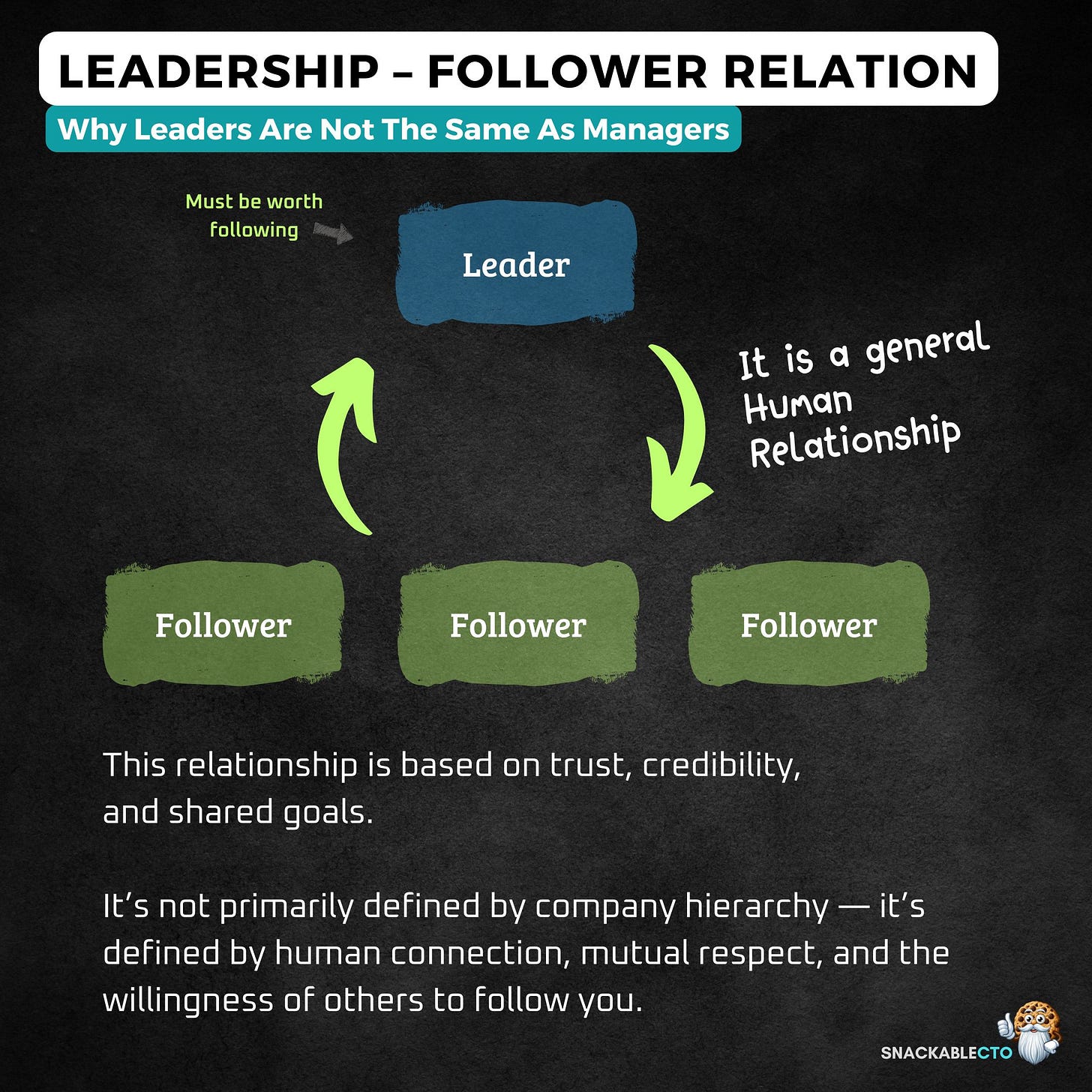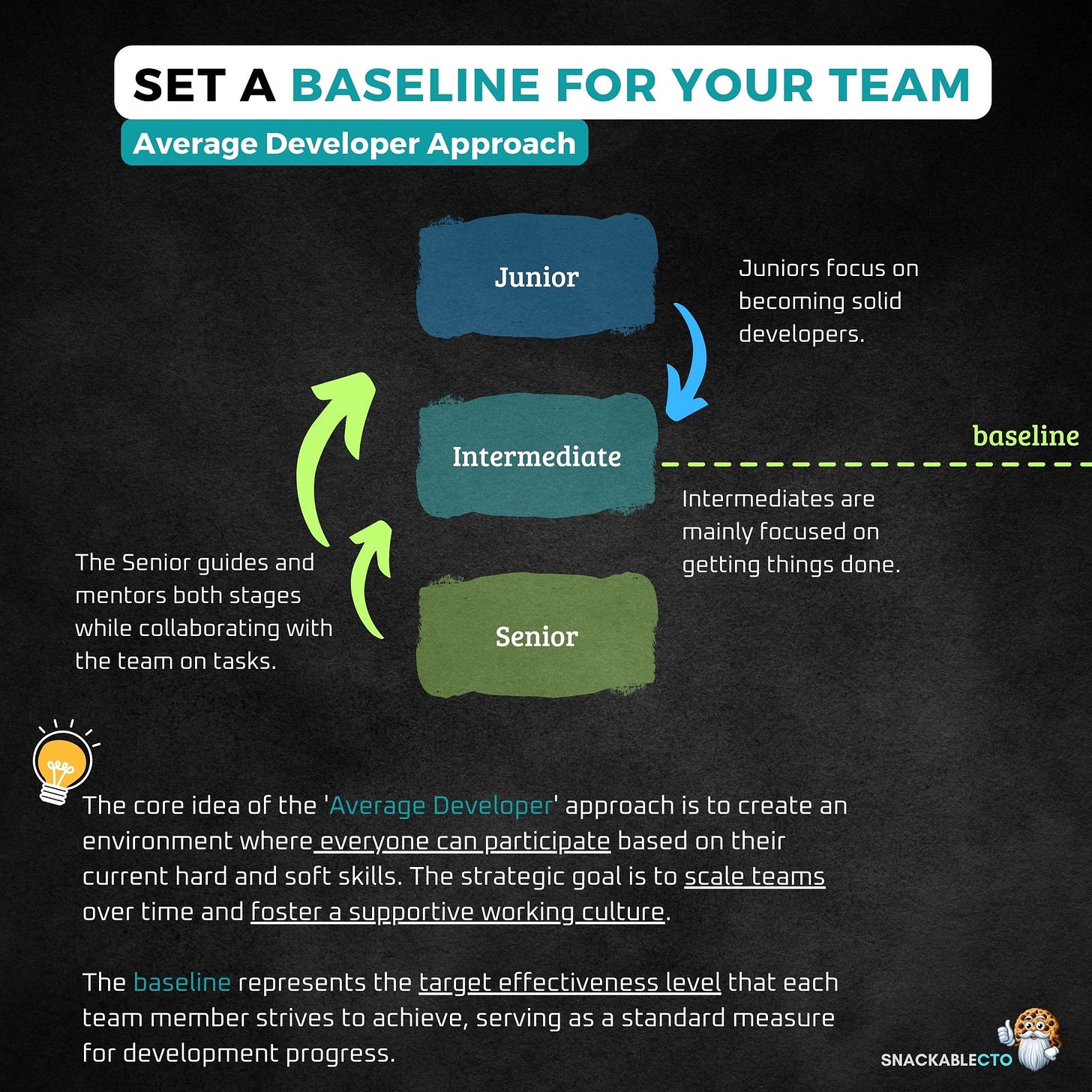"A leader is not a role. A leader is a relationship to the people you lead." — from the livestream
I recall the moment I first realized I was the bottleneck.
It wasn’t during a standup or while planning a roadmap. It hit me late at night, as I stared at a whiteboard full of post-it notes — each one a different flavor of team struggle: missed deadlines, silent meetings, a wave of burnout that no retro could fix. I had a title. I had experience. But I didn’t have follow-through. Not from the team. Not from myself.
What I faced wasn’t a lack of process. It was resistance. Invisible, silent, but everywhere. And I had to ask: What actually makes someone worth following?
Leadership Is a Relationship
“We often confuse managers with leaders”
One of the biggest revelations I had was that leadership isn’t a role to be filled; it's a mindset. It's a relationship. We often confuse managers with leaders. Managers manage resources, define boundaries, and set headcounts. A leader, however, is someone others choose to follow. It’s about how others perceive you — are you worth following? That’s a different question from, Do you have authority? "Do"
In practice, this means that you can be both — a manager by role, and a leader by relation. And the most successful tech leaders I know are both.
You Lead People — Not Machines
You don’t lead CI/CD pipelines or cloud infrastructure. You manage those. But when it comes to humans, it’s a different game. You lead through trust, mission, and clarity. That means:
You build a narrative people can see themselves in.
You define what success looks like.
You make space for others to take ownership.
Ownership doesn’t happen because you assign it. It occurs when people emotionally connect to a mission and believe they matter in achieving it.
From A to B — The Mission Journey
Every mission is a journey. You start at A. You want to get to B. As a leader, your job is to tell the story of why B matters and how we get there together.
That story has to be meaningful. There must be value at B—something better than where we are now—faster releases, clearer architecture, less tech debt. But it also needs a why. Why are we doing this now? Why should your team care? Why should they invest their time, energy, and creativity in this?
This is where leadership shines — you paint the vision, but leave space for others to help define the path.
The Power of Storytelling
We are wired for stories, which activate our sense of possibility. When your team hears a story about transforming a messy deployment process into a clean CD pipeline with clear benefits at the end, they can imagine themselves as the protagonists. When that happens, you stop being a micromanager and start becoming a guide.
Silence in meetings often means your team hasn’t bought into the story. If no one speaks, no one sees themselves inside the mission. That’s your cue to narrate better, not louder.
This is where cognitive bias comes in. One of the most powerful is the endowment effect — people value things more when they feel a sense of ownership over them. If your story gives them agency and authorship, they are more likely to care deeply about the outcome.
Resistance vs. The Muse
Every team and individual experiences resistance. It’s the internal voice that says, "This won’t work. We’ve tried that. Why change?" Resistance shows up especially when the potential for transformation is greatest.
On the other hand, there’s what I call The Muse—the inner voice that whispers about our potential. It’s the spark that makes someone say, "Maybe this time, we can do it differently."
Leadership is about helping people turn down the volume on resistance and turn up the volume on their own inner Muse—not with pressure but with clarity and purpose.
Resistance is often fueled by status quo bias, the deeply ingrained mental shortcut that tells us to stick with what we know, even if it’s not optimal. Change is cognitively expensive, so your role as a leader is to reduce the perceived risk of change and increase the perceived reward.
Discipline and Credibility
Resistance is loudest at the beginning and at the end of any journey. That’s where your discipline matters.
Discipline creates credibility. Your followers won’t trust you because you talk about excellence. They’ll trust you because you show up consistently. You ship. You improve. You keep your baseline. And when you fall, you get back up and keep going.
That’s what builds the kind of trust where others will follow you into the unknown.
This taps directly into reciprocity bias — the human tendency to respond in kind. When your team sees your consistency, discipline, and effort, they instinctively want to return the favor. This is why credibility multiplies impact. It creates a silent social contract: I see you showing up. I’ll show up too.
Strategic, Tactical, Operational — Leave Room
Good leadership isn’t about defining every single task. It’s about setting the direction at the strategic level and leaving enough room at the tactical and operational levels for others to take ownership.
If you’re doing all the thinking, you’ve already lost. Devs need space to make decisions, experiment, and fail safely. Ownership happens where trust meets opportunity.
This also connects to autonomy bias — people feel more motivated when they believe they are acting on their own choices. If everything is over-specified, motivation collapses. Space is not a luxury — it's fuel.
Micromanagement Destroys Ownership
A micromanager destroys the very thing they want most: results.
They remove thinking from the process and turn people into task executors. Developers become passive, teams become disengaged, and the mission you’re driving toward becomes mechanical rather than meaningful.
Ownership comes from space, not surveillance.
Juniors vs. Seniors — Building the Future
Many teams collapse not from lack of effort, but from bad expectations.
Juniors are not cheap labor. They’re investments. If you expect junior devs to carry senior-level complexity without mentorship, you’re setting them up to fail — and burning out your seniors in the process.
The healthiest teams I’ve seen balance:
Juniors: Apprentices in training, emotionally engaged, future contributors.
Intermediates: Solid performers, able to work independently with support.
Seniors: Not just the best coders, but the best enablers. Coaches. Guides.
If you build this model right, you create loyalty, grow your future seniors, avoid burnout, and build a culture of mutual respect where ownership and learning are part of the team’s DNA.
This approach activates another essential psychological principle: investment theory. People are more likely to stay engaged in environments where they’ve invested time, learning, and growth. Training juniors isn’t a cost. It’s a high-return investment.
Your Culture Is the Sum of Your Leadership
Culture isn’t what you write in your Notion wiki. It’s what people feel is normal.
And they take cues from you:
How you speak in moments of pressure.
Whether you follow through.
Whether you believe in your own mission.
Your consistency defines your credibility. And your credibility determines whether your team listens when it’s time to move from A to B.
Final Thought
If you disappear in the middle of a mission, would your team continue the journey without you?
If yes, congratulations. You’re leading.
If not, that’s the work.
Want to go deeper? The full video session is available for paid subscribers. I walk through the journey live, including diagrams, real coaching insights, and how to design tech culture that actually works.
What’s one leadership pattern you’ve used recently that worked — or failed? Let’s talk.















